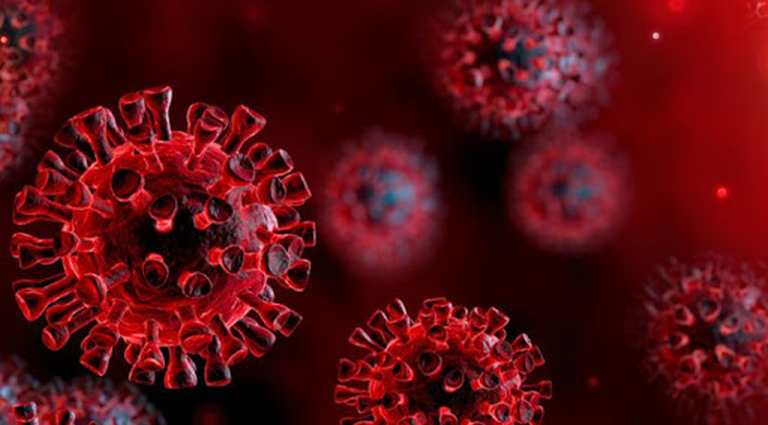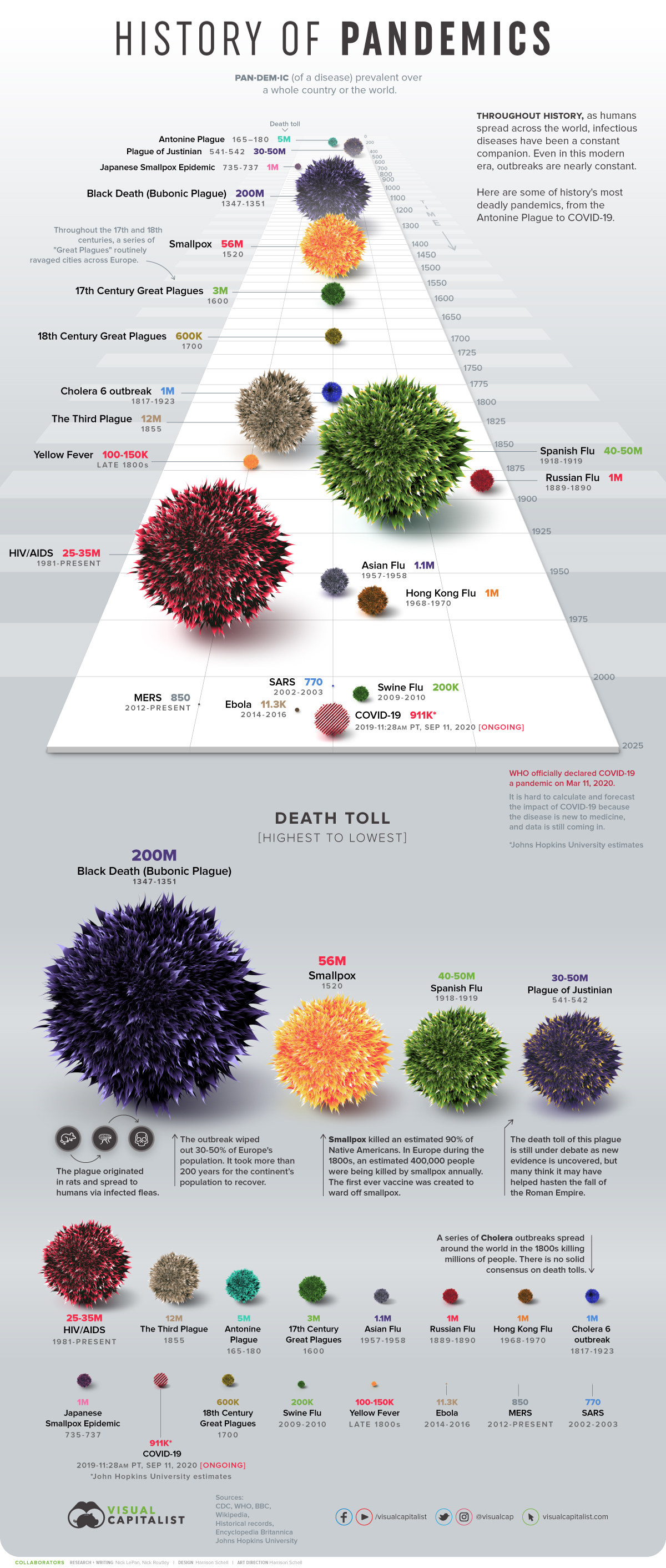COVID-19 is not as deadly as we originally thought; ranks at the bottom of the most deadly pandemics in history

More than eight months after the coronavirus started in Wuhan, China, we still don’t know everything about the virus. The deadly virus has killed at least 928,212 lives around the world. But how does the ongoing coronavirus pandemic compare to some of the most deadly pandemics in history?
Despite the media hysteria, it turns out COVID-19 is not in one of the top ten deadly pandemics in history. In addition, a recent study by UCLA and Stanford finds COVID-19 “10 Times Less Fatal than First Thought.” The study also found that your chance of actually dying from COVID-19 is 1 in 19.1 million. “The vast majority who catch it will have mild or no symptoms. Children are largely spared,” the authors of the study said.
Now looking at the deadly pandemics in history, the Black Death or Bubonic Plague of 1347-1351, which was spread by fleas, killed as many as 200 million people in just a few year’s time. It’s estimated that up to half of Europe’s entire population was wiped out from the plague in the 14th century.
The Small Pox outbreak in the 1500s killed an estimated 56 million; the majority were children. In 1918, the Spanish Flu killed approximately 40 to 50 million. The HIV/AIDS pandemic is currently the fifth deadliest. Since 1981, 25 million to 35 million people have died. A decade ago, the Swine Flu claimed the lives of 200,000 people.
The team from the modern business media company, Visual Capitalist, did an excellent job of putting together an infographic with a visualization that outlines some of history’s most deadly pandemics. The infographic shows a timeline of pandemics through the centuries, starting with The Antonine Plague of 165 to 180 AD, which killed an estimated 5 million people in the Roman Empire to the current COVID-19 event.
Below is a list of the major known epidemics (including pandemics caused by an infectious disease) that have occurred over time. Widespread non-communicable diseases such as cardiovascular disease and cancer are not included.

| Name | Time period | Type / Pre-human host | Death toll |
|---|---|---|---|
| Antonine Plague | 165-180 | Believed to be either smallpox or measles | 5M |
| Japanese smallpox epidemic | 735-737 | Variola major virus | 1M |
| Plague of Justinian | 541-542 | Yersinia pestis bacteria / Rats, fleas | 30-50M |
| Black Death | 1347-1351 | Yersinia pestis bacteria / Rats, fleas | 200M |
| New World Smallpox Outbreak | 1520 – onwards | Variola major virus | 56M |
| Great Plague of London | 1665 | Yersinia pestis bacteria / Rats, fleas | 100,000 |
| Italian plague | 1629-1631 | Yersinia pestis bacteria / Rats, fleas | 1M |
| Cholera Pandemics 1-6 | 1817-1923 | V. cholerae bacteria | 1M+ |
| Third Plague | 1885 | Yersinia pestis bacteria / Rats, fleas | 12M (China and India) |
| Yellow Fever | Late 1800s | Virus / Mosquitoes | 100,000-150,000 (U.S.) |
| Russian Flu | 1889-1890 | Believed to be H2N2 (avian origin) | 1M |
| Spanish Flu | 1918-1919 | H1N1 virus / Pigs | 40-50M |
| Asian Flu | 1957-1958 | H2N2 virus | 1.1M |
| Hong Kong Flu | 1968-1970 | H3N2 virus | 1M |
| HIV/AIDS | 1981-present | Virus / Chimpanzees | 25-35M |
| Swine Flu | 2009-2010 | H1N1 virus / Pigs | 200,000 |
| SARS | 2002-2003 | Coronavirus / Bats, Civets | 770 |
| Ebola | 2014-2016 | Ebolavirus / Wild animals | 11,000 |
| MERS | 2015-Present | Coronavirus / Bats, camels | 850 |
| COVID-19 | 2019-Present | Coronavirus – Unknown (possibly pangolins) | 928,212 (Johns Hopkins University estimate as of September 13, 2020) |
Note: Many of the death toll numbers listed above are best estimates based on available research. Some, such as the Plague of Justinian and Swine Flu, are subject to debate based on new evidence.

